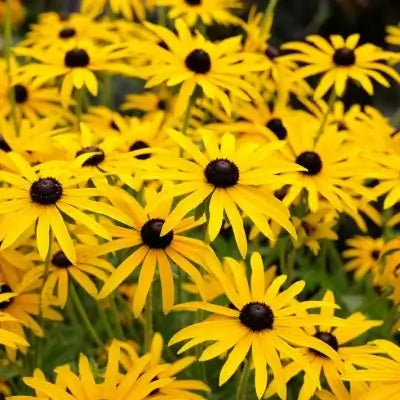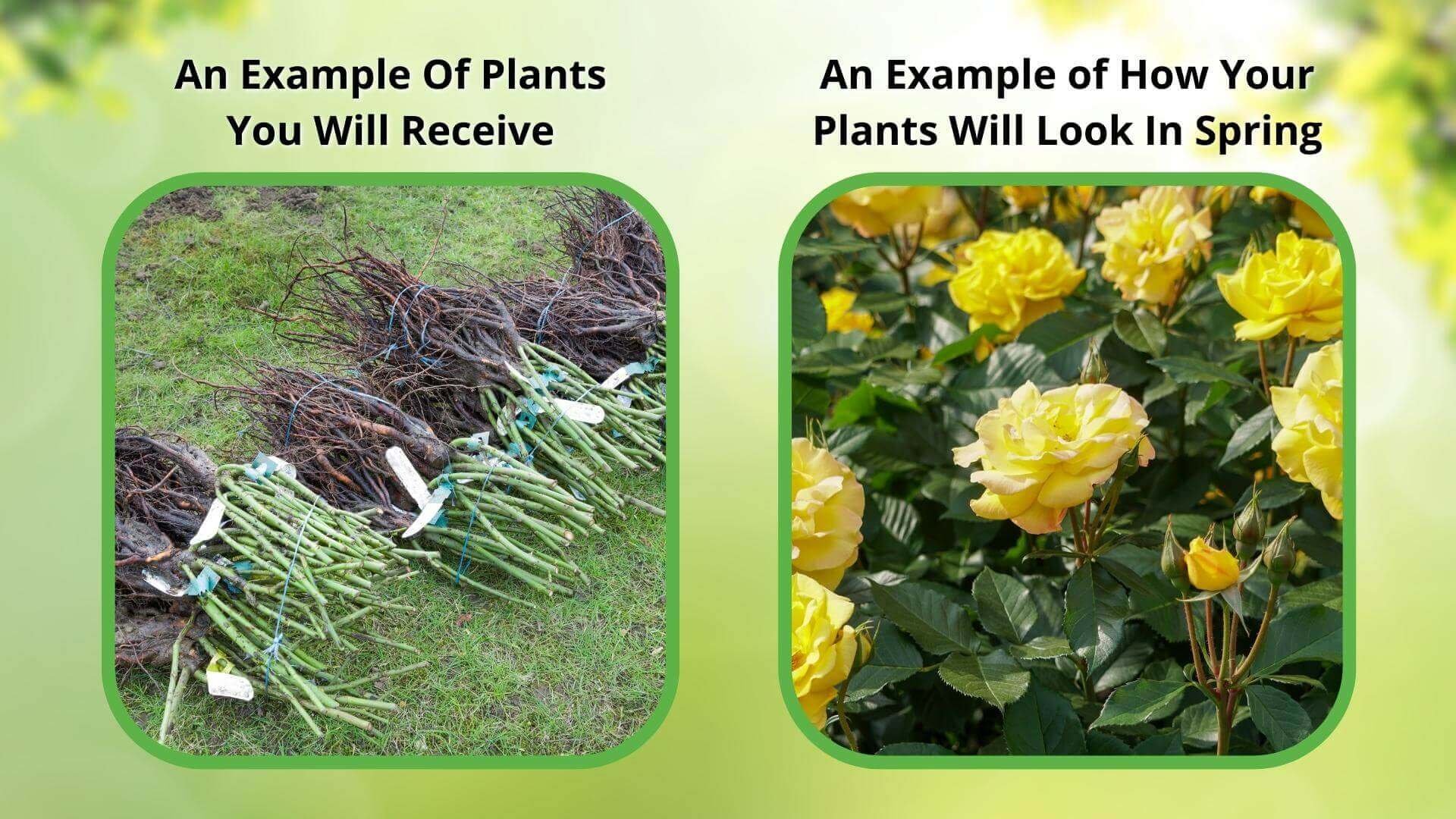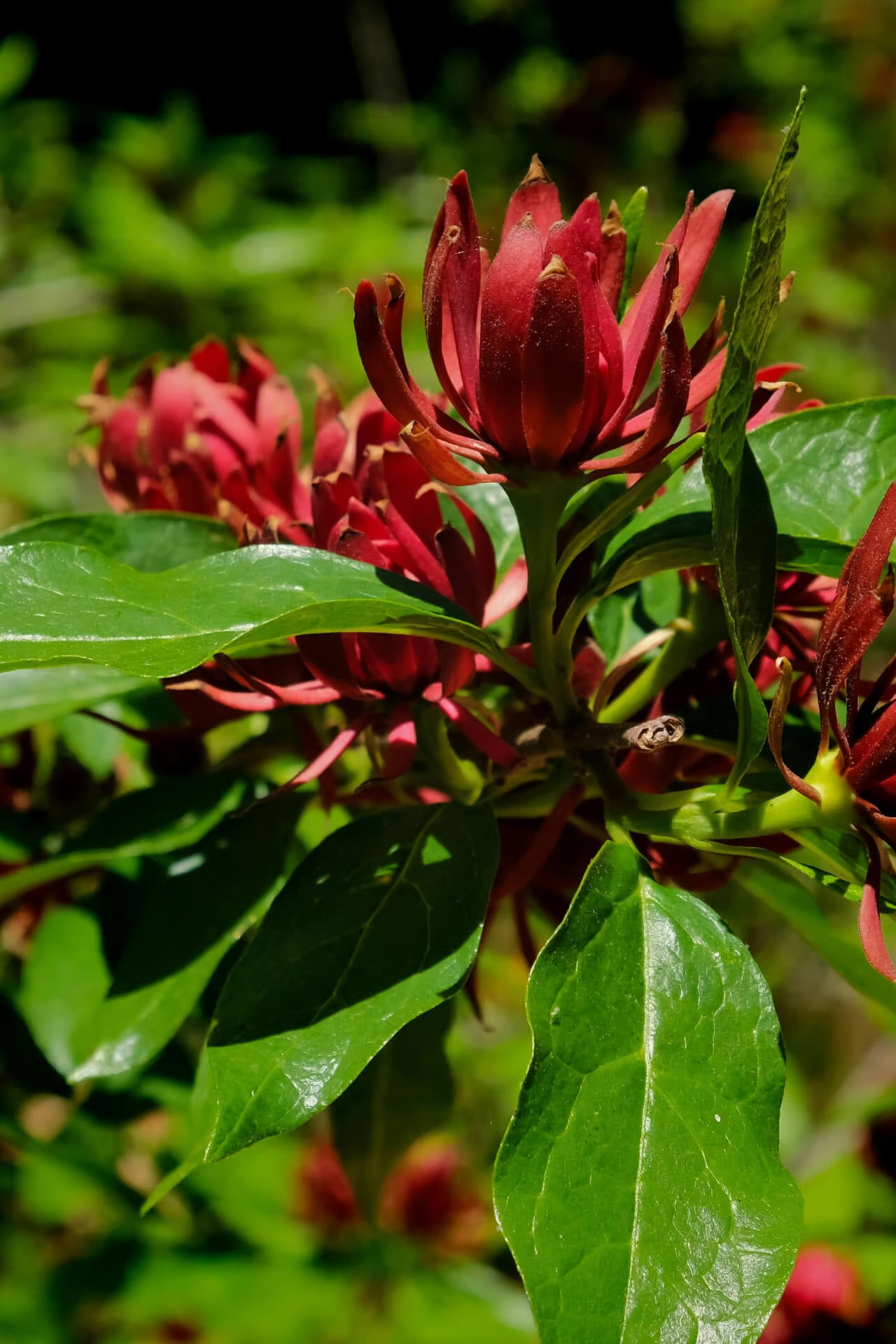
perennial plants
Striking, fragrant blooms for garden charm
Attracts pollinators with sweet scent
Thrives in sun to partial shade
Thrives in
ZONE 4ZONE 5ZONE 6ZONE 7ZONE 8ZONE 9Planting Season:
Nov-AprilWhen you add one plant to cart, it automatically adds the second one free on Bogo deals.
Carolina Allspice blooms delight the senses, emitting a sweet and spicy fragrance reminiscent of ripe strawberries, which adds a delightful ambiance to any outdoor space. The maroon to brown blooms are eye-catching and long-lasting, ensuring a beautiful display throughout the growing season. It is a captivating and versatile plant with numerous landscaping benefits. Native to the southeastern United States, it is cherished for its unique characteristics and aesthetic appeal, making it a famous choice landscape.<
Formally named Calycanthus floridus, the plant is a rounded deciduous shrub that grows in the eastern United States. It's often called sweetshrub in honor of its fragrant deep-red blooms, which are said to carry the scents of strawberry, pineapple, and banana. The shrub adapts to various settings and grows taller in shady areas.
It is native to the Southeast. In the wild, it grows along streambanks, shady woodlands, and mixed deciduous forests. When you find this understory shrub on hillsides, clearings, and by woodland edges, its structure will likely be open and sparse.
it grows six to nine feet tall and equally wide in cultivated settings. From April to May, the plant produces a bountiful supply of large, solitary, magnolia-like blooms at the ends of its branches. These clustered, maroon to reddish-brown flowers will continue to appear less frequently in June and July. As the weather warms, the blossoms become quite fragrant. The plant itself is aromatic and dense. Its dark, oval-shaped green leaves and smooth grayish-brown bark emit a pleasant scent when scratched or bruised. The plant's glossy foliage will turn yellow to yellow-green in the fall as the flowers yield to form leathery, brown, urn-shaped seed capsules. These pods ripen in September and October and last through the winter, emitting a lovely fragrance when crushed.
They make beautiful all-season additions to various garden settings. They are wonderful when planted near outdoor living spaces, walkways, patios, and entrances, where they can serve as privacy screens. The shrub also does well in naturalistic settings, like woodland gardens, and it makes a lovely cutting plant for flower arrangements.
Its closely packed branches provide nesting habitat and protective cover for songbirds and small mammals. They also host moths, such as the double-banded zale and the oblique-banded leafroller moth. During the spring and summer, beetles pollinate the shrubs in a process called cantharophily.
If you're looking for fragrant, floral shrubs that add richness and depth to your garden, consider planting it. With their gorgeous blossoms and lush green leaves, you will surely be delighted by their presence.
It has an interesting aroma reminiscent of cloves or cinnamon. This makes them ideal for scented gardens. Also, they produce a rich, sweet smell in the later part of spring.
It has a amazing and warm fragrance that makes it stunning as it flaunts its warm colors. The reddish-brown flowers symbolize warmth and a connection to nature. Its hues bring out a sense of home and make it a perfect choice for gardens that celebrate seasonal cycles.
It prefers highly productive, well-drained, moist soils and a position of partial to full sun exposure. It prefers USDA hardiness Zones 4-9 and is perfectly suitable for a range of garden conditions, including the woodland garden-shaded borders.
Not only does it look stunning, but it also possesses aesthetics all year round-leaves, flowers, and fall colors. It's also a relatively simple plant that requires little care when planted and is good for pollination by bees and butterflies.
Carolina Allspice requires little advance planning since it grows at a moderate rate, usually gaining between one and two feet per month and up to 12-24 inches. It grows to around 6 to 9 feet in height and spread, which qualifies it for both shrubbery and hedging uses.

Bloom Season
Summer
Bloom/Foliage Color
Red
Height at Maturity
Under 10 Feet
Care
Carolina Allspice flourishes in well-drained soil and benefits from regular watering, especially during dry spells. Light pruning after flowering helps maintain shape and promotes new growth. Spread mulch around the bottom to keep moisture and prevent weed growth.
Plant Reproduction
Carolina Allspice spreads through suckers and seeds.
Plant bare-root shrubs during the more excellent spring or fall months, from November through April. Dig a hole twice as wide as the root system and slightly more profound than its height. Position the shrub so that the top of the roots is level with the ground, and put back the soil dug over the roots. Apply a 2-3 inch layer of mulch around the base to retain moisture and suppress weeds, ensuring the mulch does not touch the shrub's stem. Water regularly, especially during the first year, to establish strong roots. Prune shrubs as needed to promote healthy growth. In the spring, fertilize with a balanced, slow-release fertilizer suited to the specific needs of the shrub.
Shipping date depends on the date displayed and chosen when you order from the product's page.
We only accept returns on plants verified dead. If you think your plants have died, we offer a 1 year warranty, please use use this File a Claim Link to verify dead plants and start with return warranty process.




Deliciously Fragrant Flowers:
Carolina Allspice boasts aromatic blooms that fill your garden with a delightful, spicy-sweet scent. Its fragrance enhances outdoor gatherings and creates a sensory-rich environment.
Wildlife Friendly:
The fragrant flowers attract pollinators like bees and butterflies, enhancing your garden's ecological health and supporting local wildlife. This natural attraction boosts biodiversity and garden vitality.
Adaptable to Different Conditions:
Thrives in a variety of soil types and light conditions, including full sun to partial shade, making it a flexible choice for diverse garden environments. Its adaptability ensures success in various planting scenarios.
Attractive, Unique Blooms:
Enjoy the unique appearance of its rich, reddish-brown flowers that stand out and add a touch of exotic charm to your landscape. Their deep, warm hues can brighten any garden space.
Caring Tips
Each box contains detailed care instructions and information about your product. But here's the basics.
Care Tips
Carolina Allspice flourishes in well-drained soil and benefits from regular watering, especially during dry spells. Light pruning after flowering helps maintain shape and promotes new growth. Spread mulch around the bottom to keep moisture and prevent weed growth.
Light Requirements
Carolina Allspice (Calycanthus floridus) thrives in complete sun to partial shade. It favors well-drained soil and can accept a range of light conditions, but it generally performs best with at least four to six hours of direct sunlight each day.
Hardy Planting Zones
4 • 5 • 6 • 7 • 8 • 9
How often should I water my plants?
How do I know if my plant is getting too much or too little sunlight?
What should I do to prepare my plants for winter?
What are the signs that my plant needs fertilizing?
How can I prevent pests from damaging my plants?
How do I choose the right plant for my climate zone?